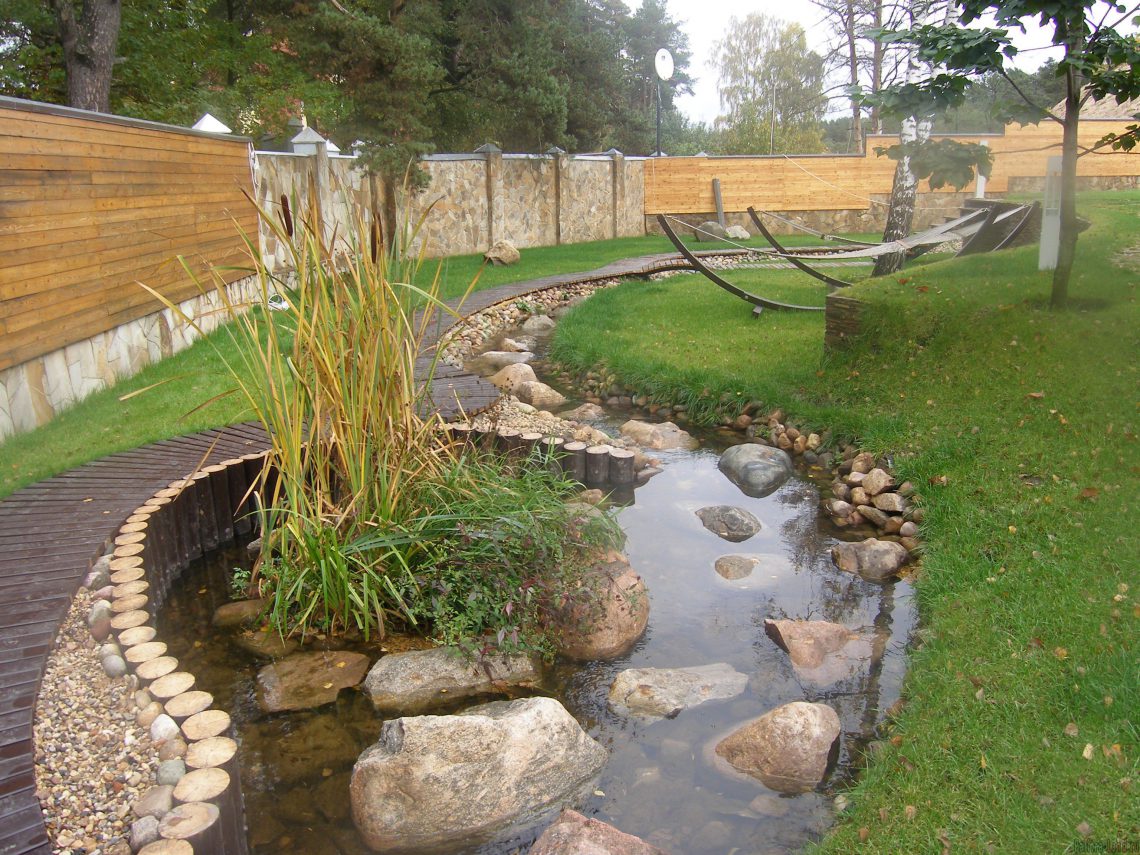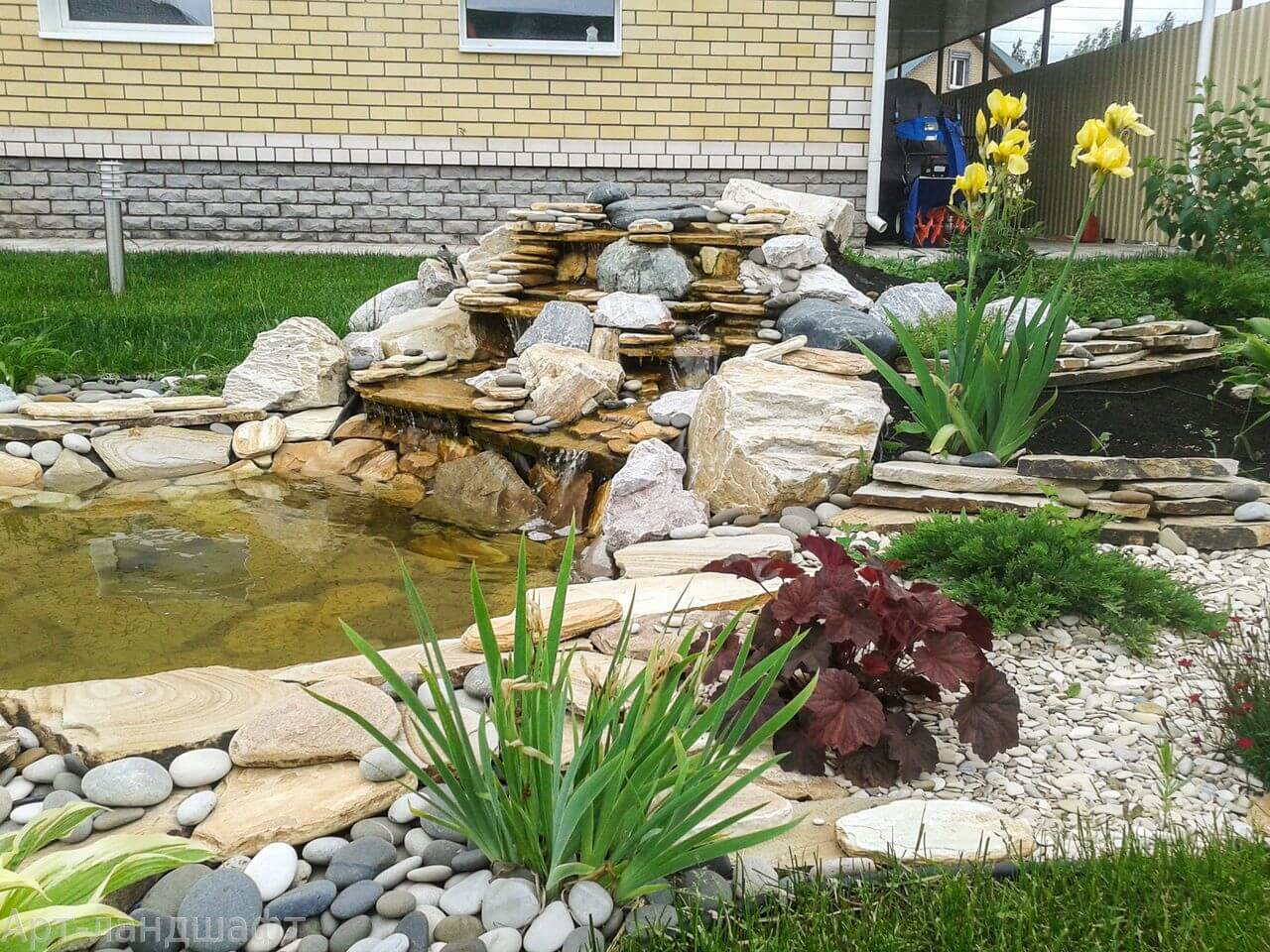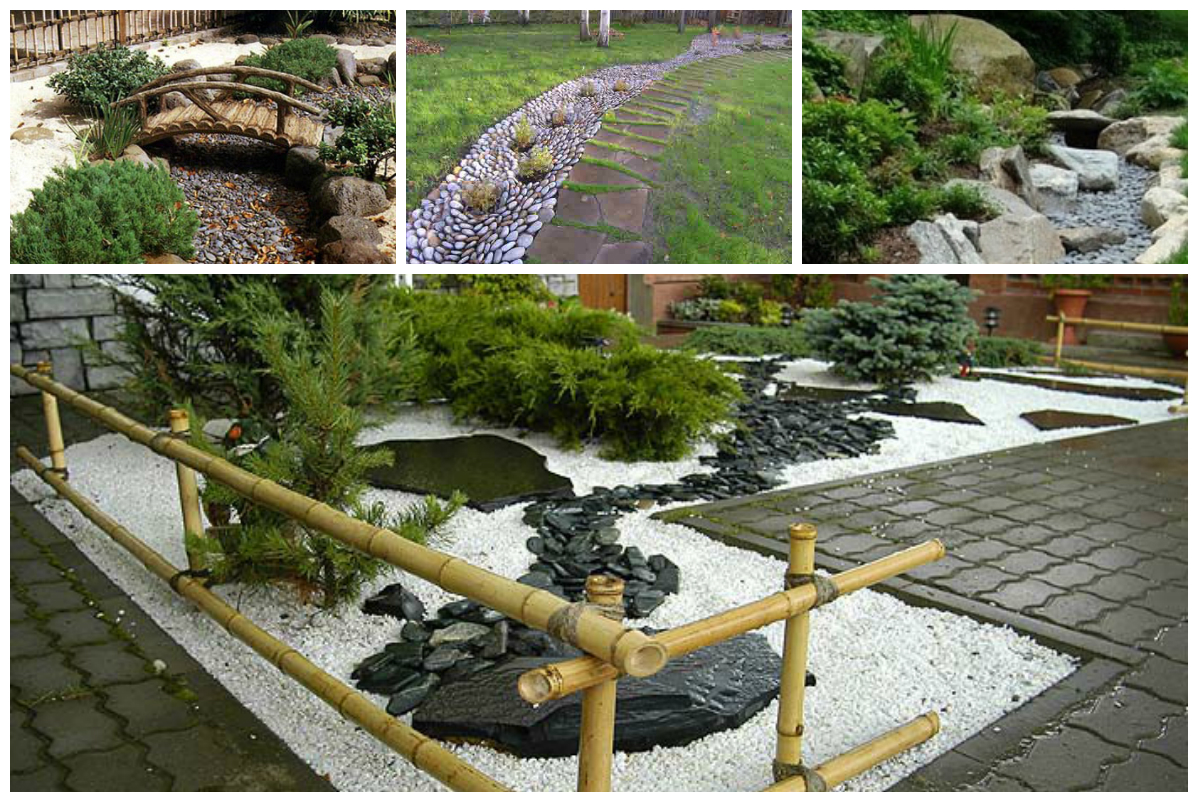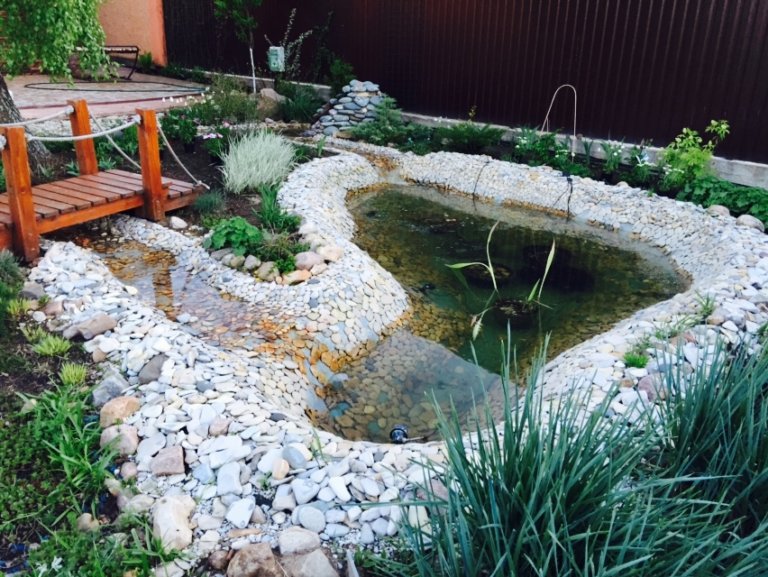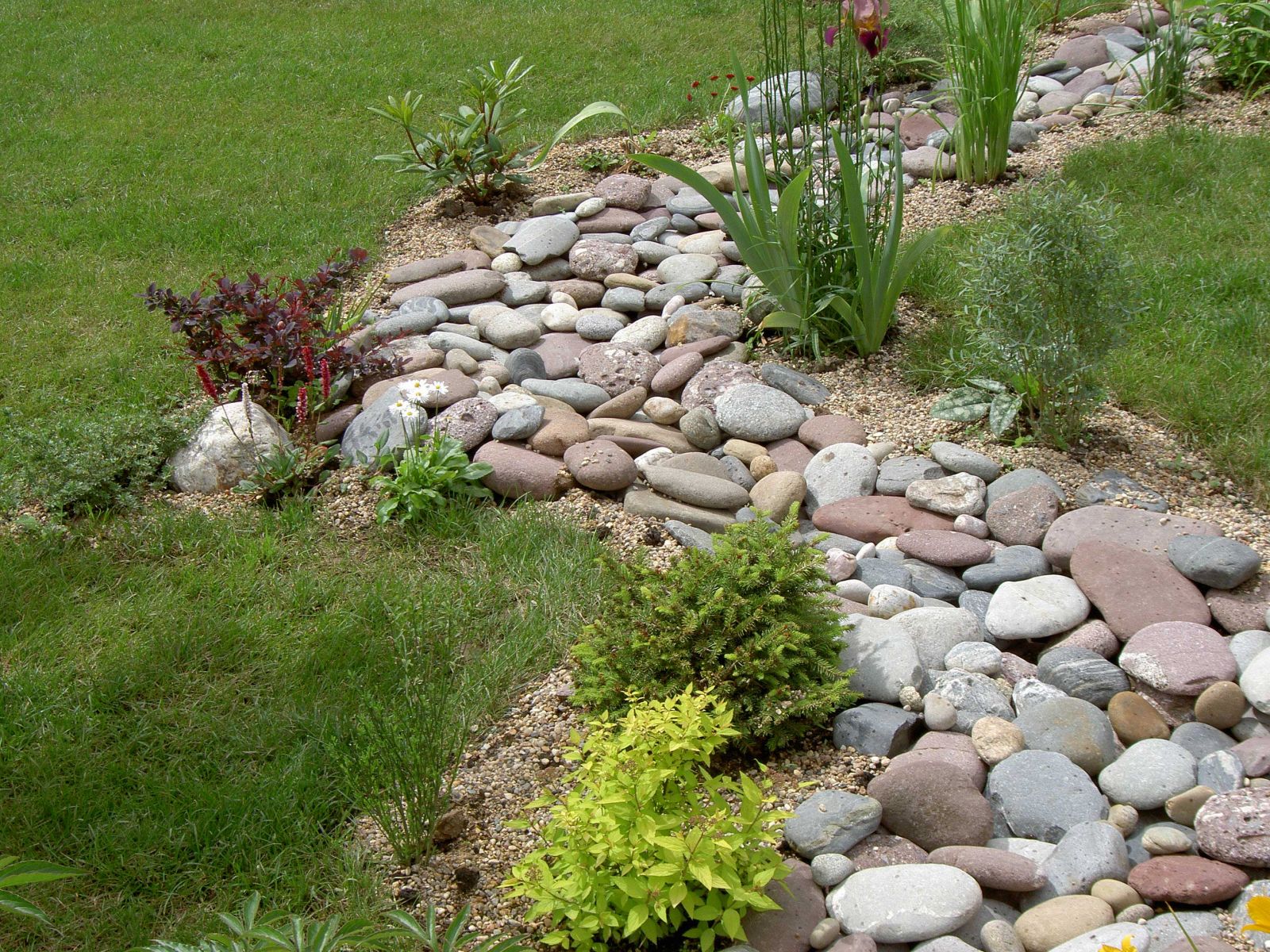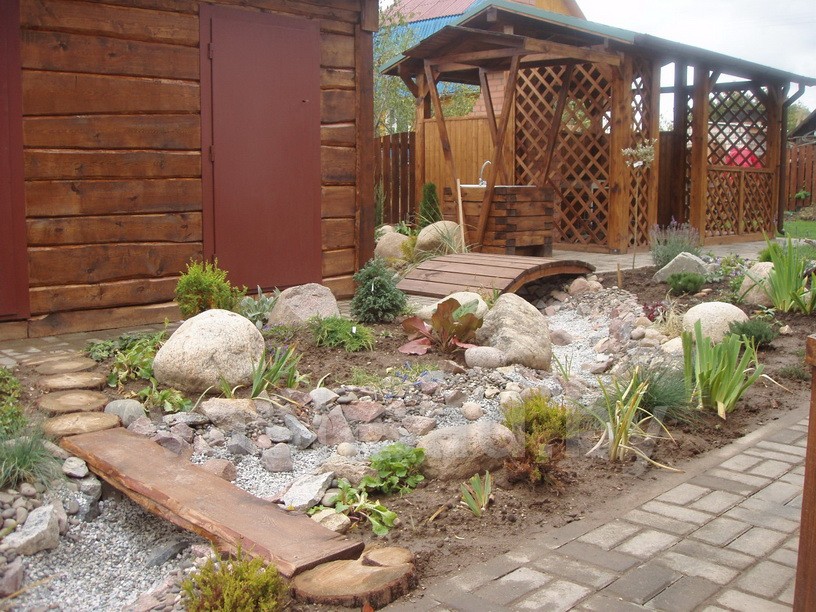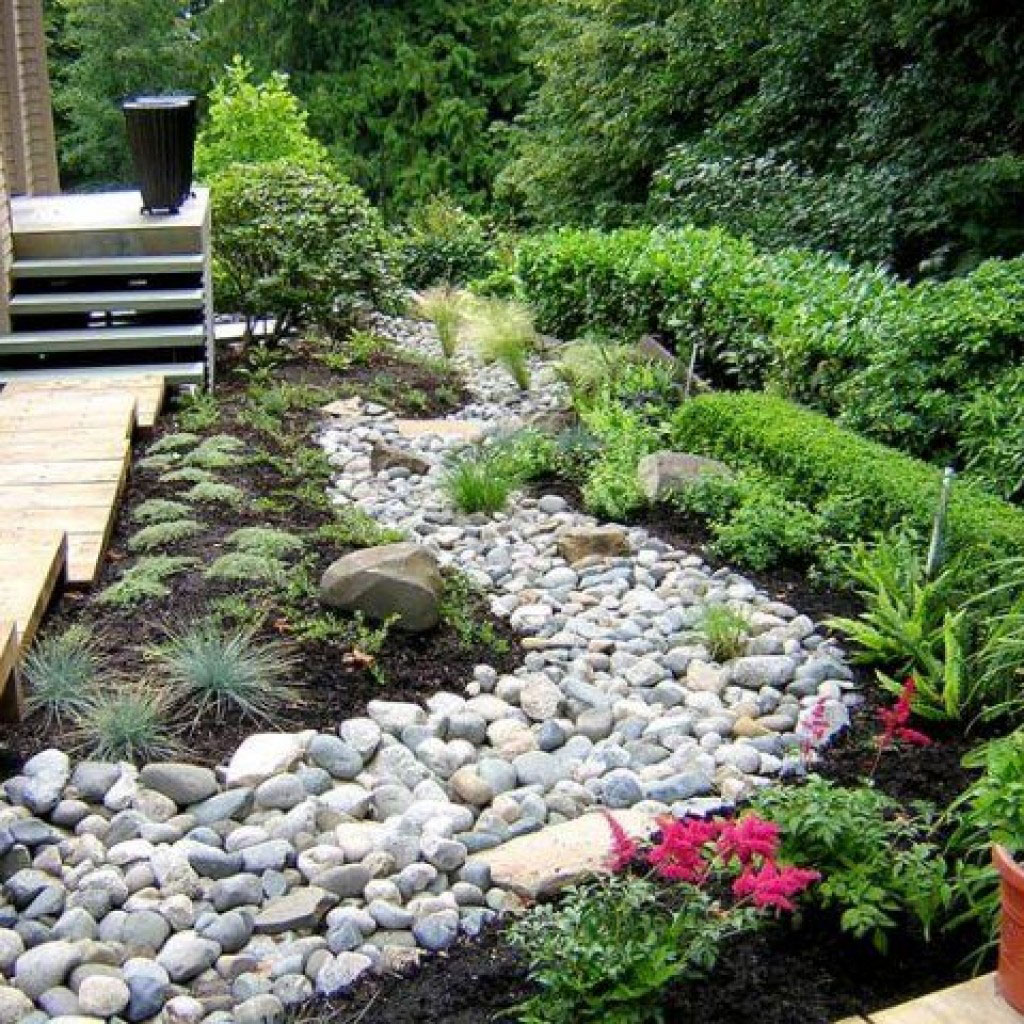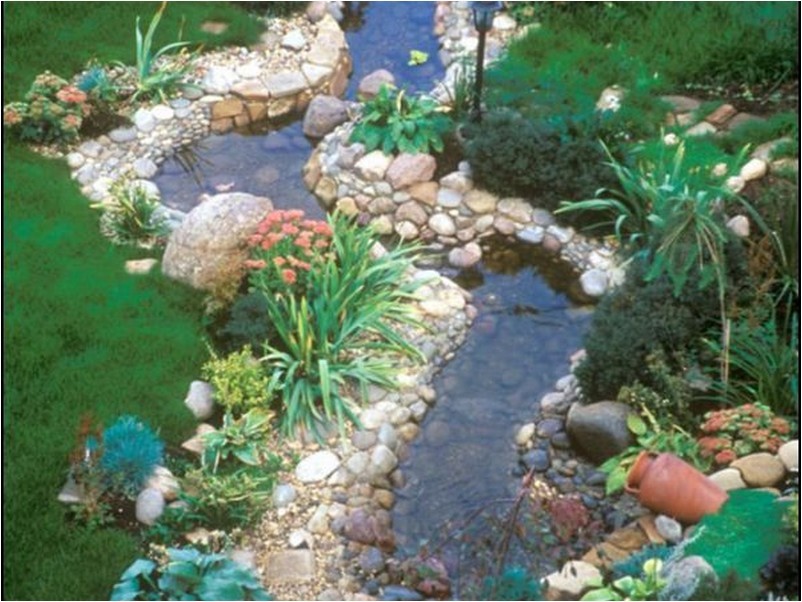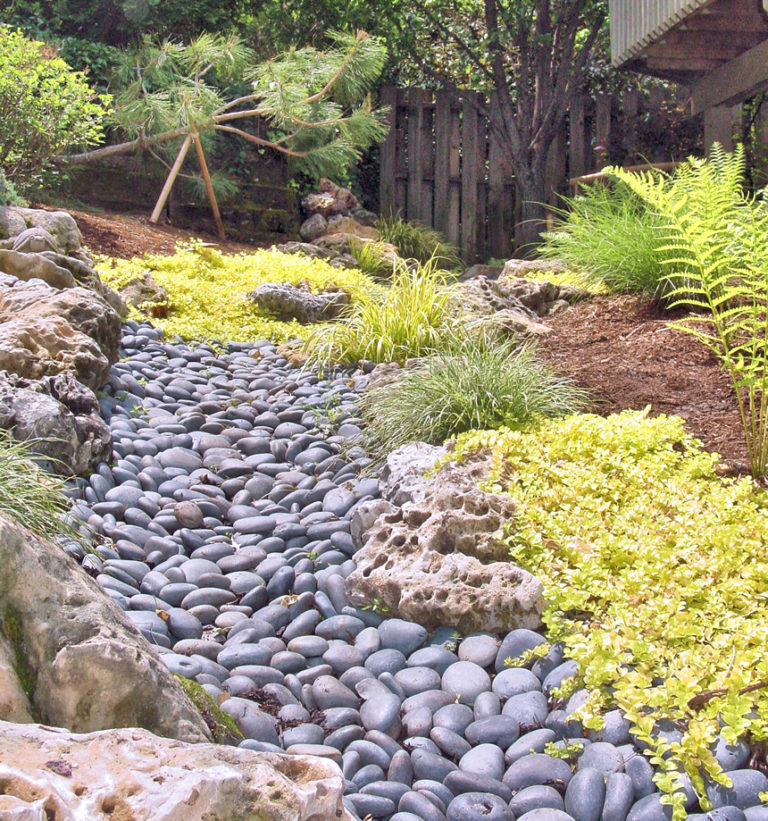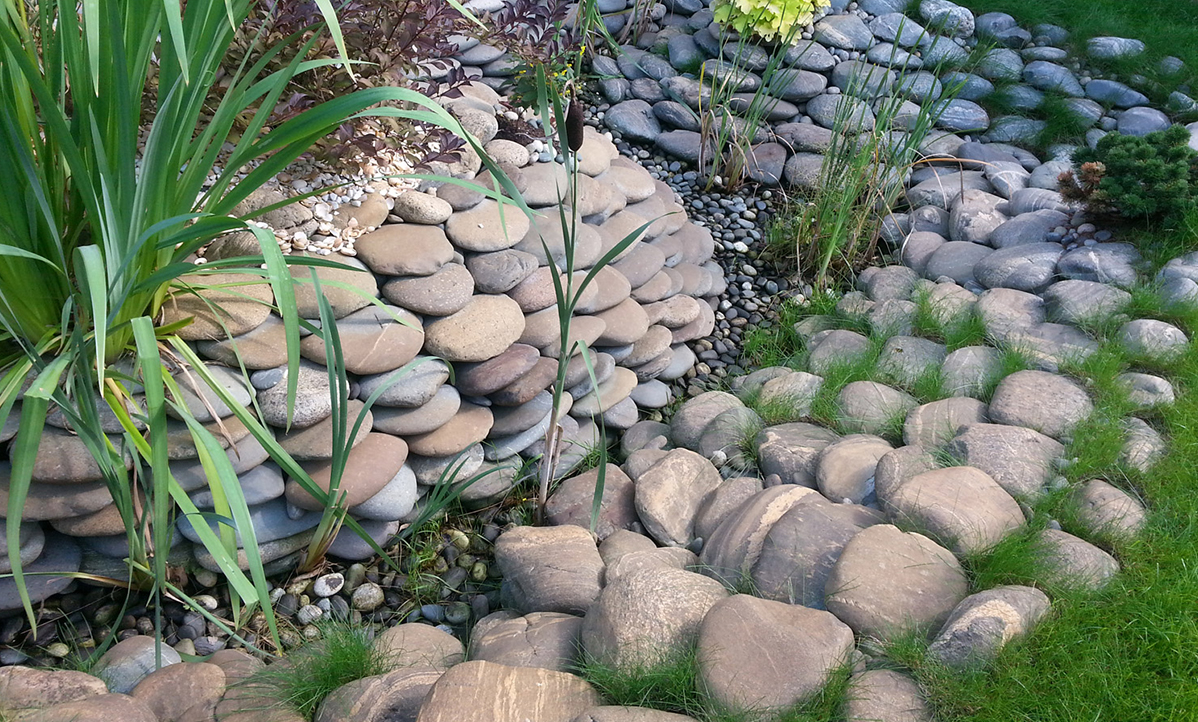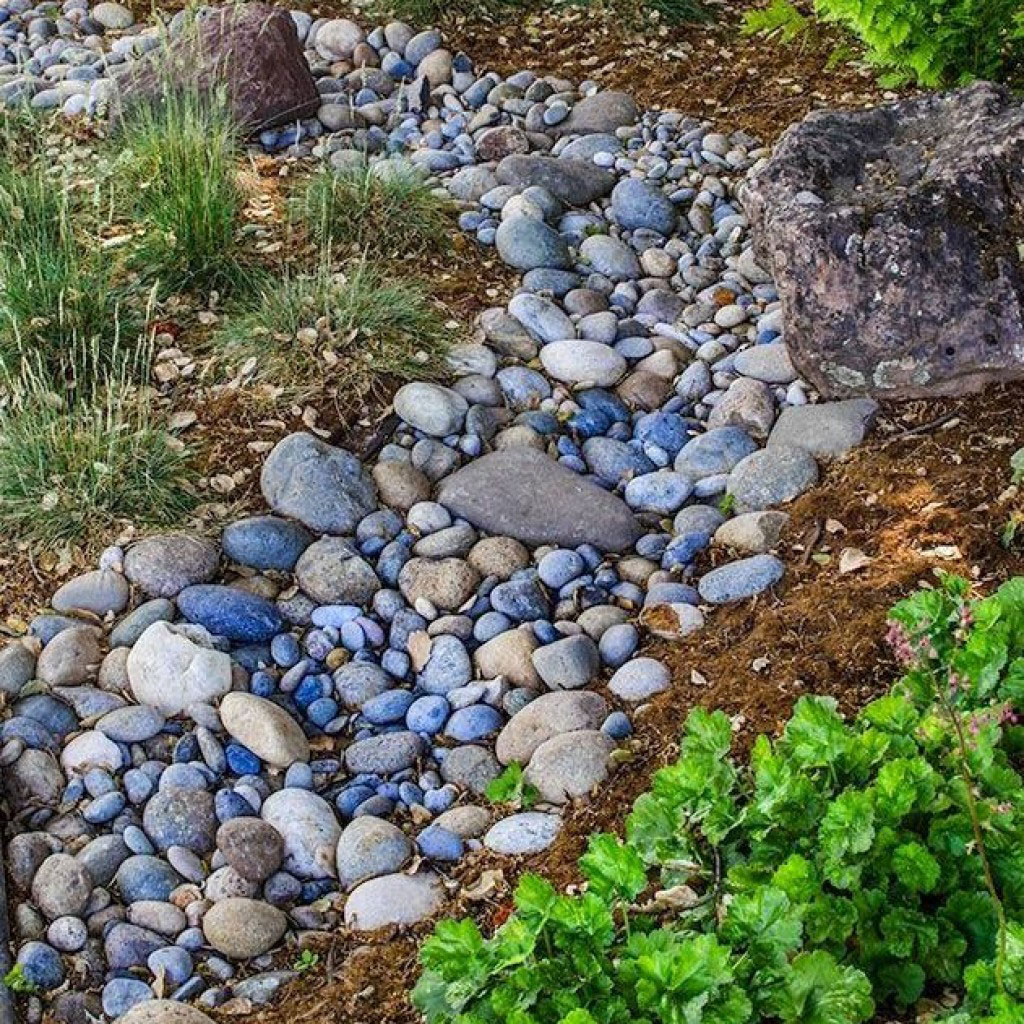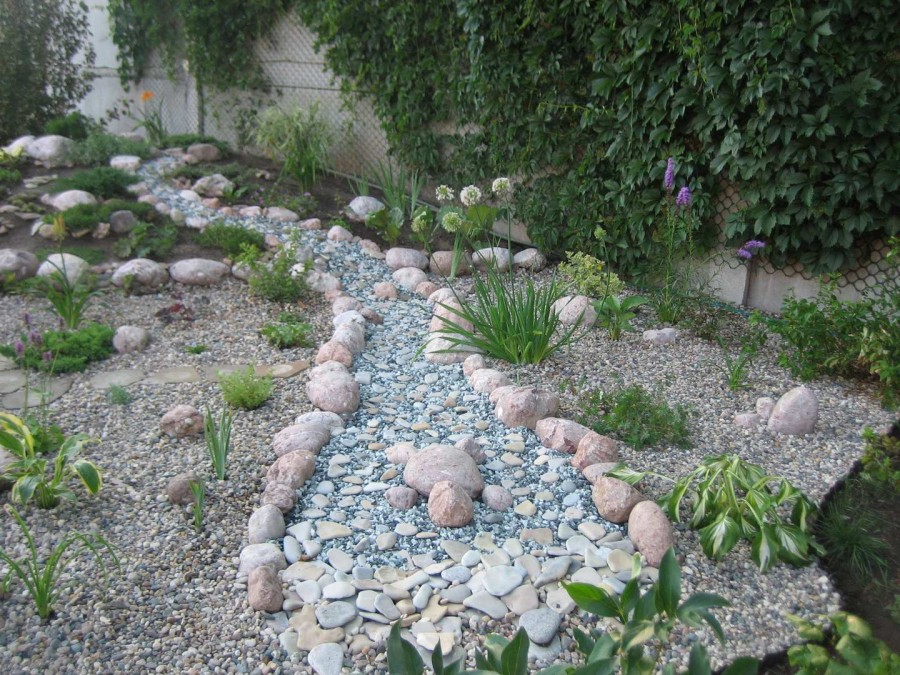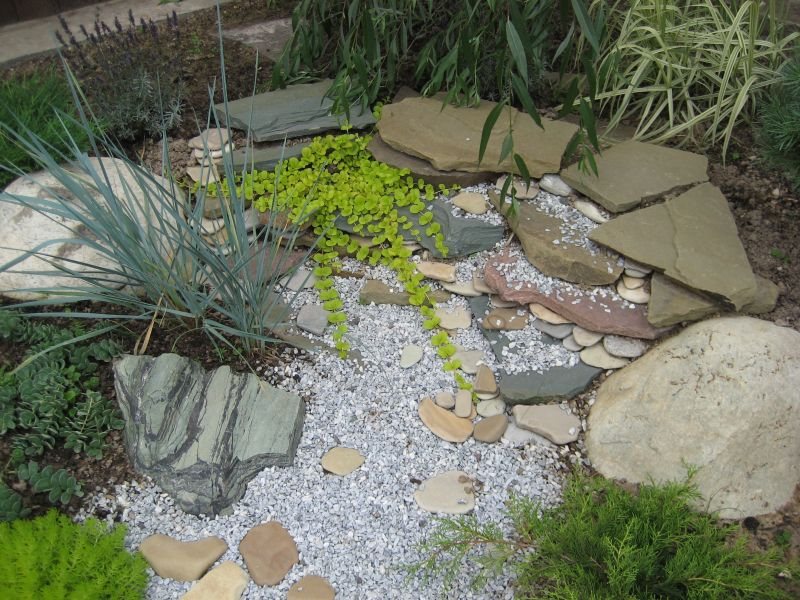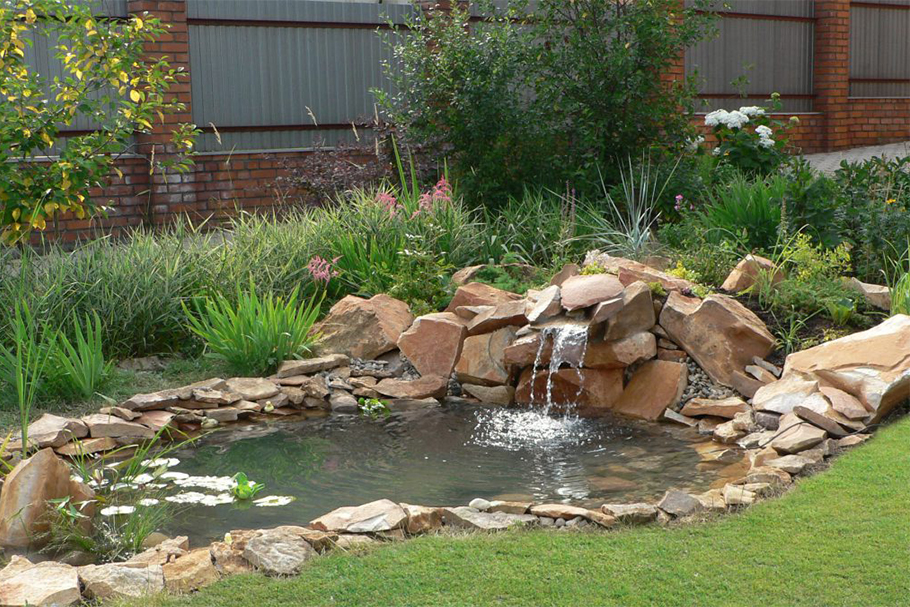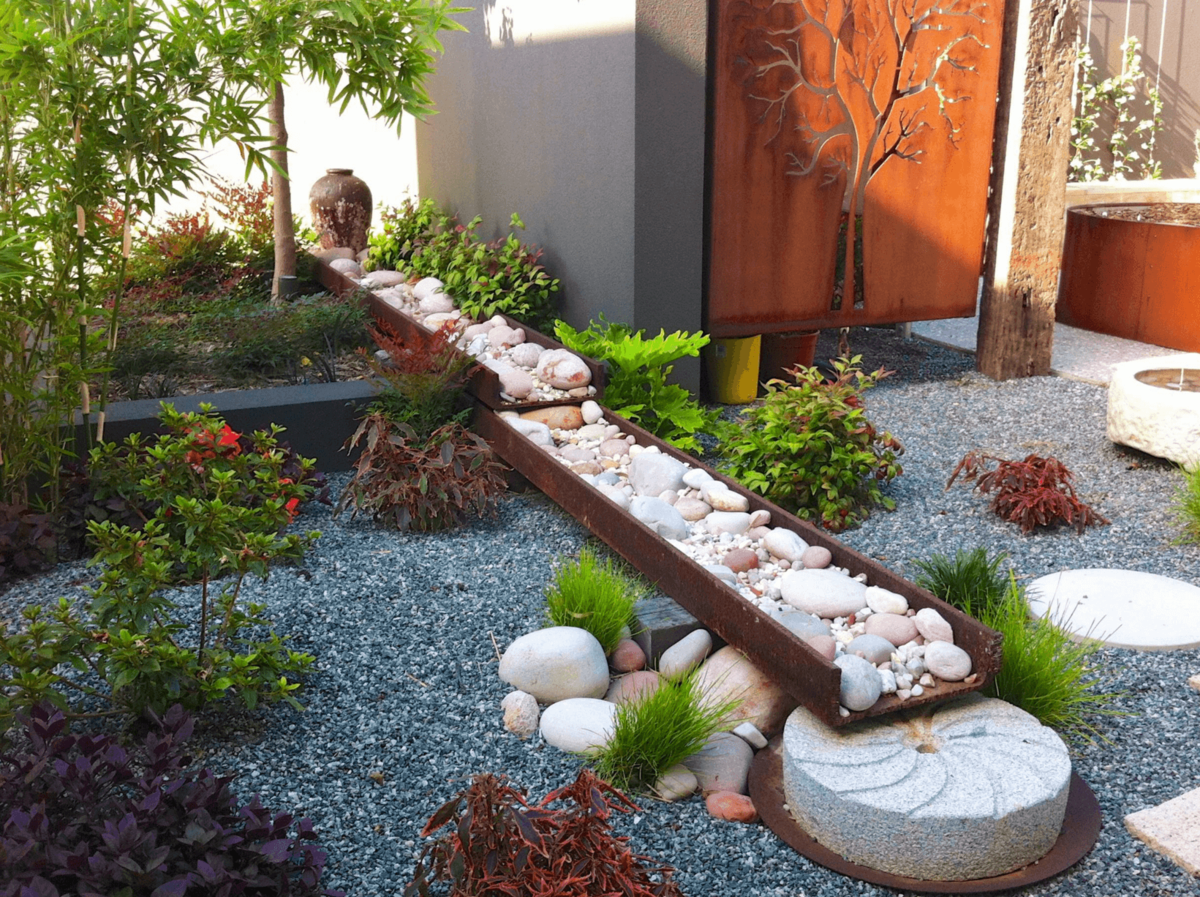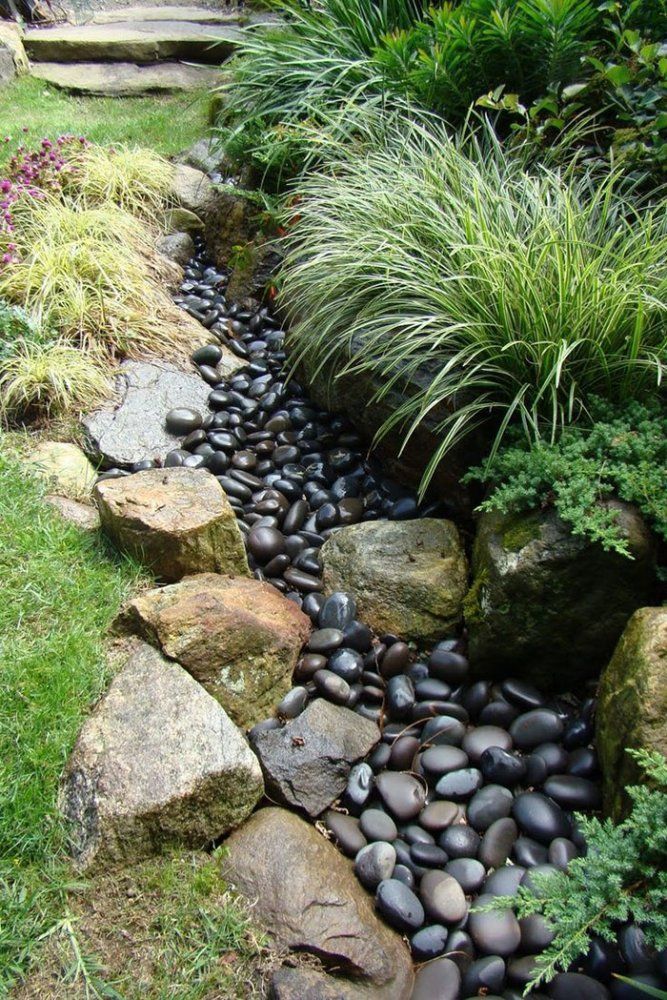Are you building a reservoir? Make no mistake!
Perhaps there is no point in convincing someone that a pond in the garden is good
Water like a magnet attracts everyone's attention and even in photographs it always looks mysterious and alluring. Is it any wonder that today the reservoir has become an indispensable attribute of the "gentleman's set" of any design project for the development of a new land plot or reconstruction of an old
Unfortunately, as a result of a formal approach to business, one garden becomes similar to another. Professional designers churn out gardens like baked pies, and they actually turn out to be cloned. To be honest, I am closer to the gardens of amateurs, who, although they sin with some amateurism, still attract more with their ingenuous soulfulness.
To make the path to beauty shorter, let's try together to disassemble typical mistakes that are surprisingly repeated in many bodies of water, and analyze their nature. And after that, step by step, we will analyze all the subtleties and secrets of a quick, easy and economical creation of a reservoir that is ideal for your garden. So, the most common mistakes.
How to make a stream in the country? Main steps
First, let's decide what type of stream you want to create. The classic is running water that intricately winds and crosses the entire site, going underground. However, it should be borne in mind that the stream is of natural origin, and it can flow in a straight line. When you create an artificial stream, you yourself set the trajectory of the water flow. In this case, in order for the water to be in motion, you will have to connect a pump. However, it should not be visible.
A simpler option is a dry stream, where there is no water. This is a kind of stylized landscape element that just imitates running water. Now let's take a closer look at each option.
If there is a natural stream on the site, then it is usually not a very attractive sight: overgrown, with a swampy smell due to the low speed of the water flow, which can sometimes even stagnate. First, you need to examine it, see where the narrowest and widest place is.
Then you need to remove the weeds along the banks. Armed with a shovel, you can give the stream several bends, expand in narrow places. Try to increase the slope by filling and deepening to give more speed to the water. However, be careful with this.
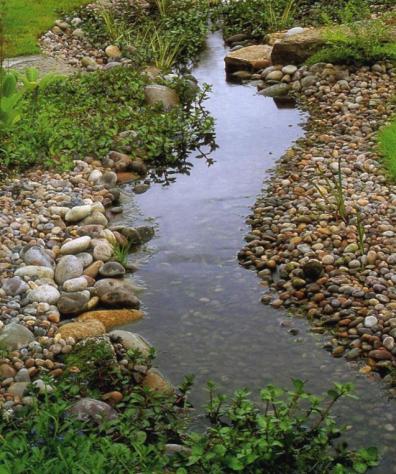
If the banks are very steep, try to make them gentle and slightly level the area near the stream by 2 meters in both directions if possible. The stream should not resemble a ditch.
It is also necessary to clean the bottom of debris, and then put pebbles and stones on it in random order, of different sizes. This will allow the stream to hum merrily. On the shore, you also need to put stones, burying them 1 / 3-1 / 2 into the ground.
The next stage is planting plants. Moreover, try to select undersized species, plant not densely, otherwise the stream will be lost behind lush vegetation.
Now let's look at creating an artificial stream. We take a site plan and plot its trajectory. It is very good if the relief has a slope, because on a flat area you will have to form it by filling, and this is an extra cost. However, don't worry, water can also run over almost flat terrain with a minimum slope, which is pumped by the pump.
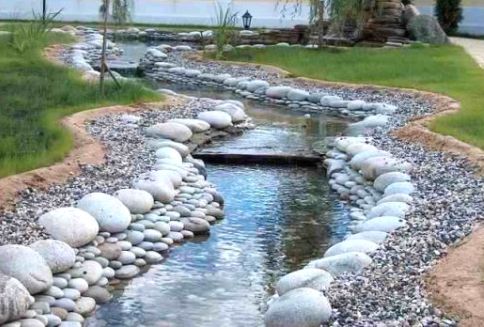
Then we proceed to the removal of the stream in nature. It is necessary to dig a shallow groove (about 20 cm) with gentle banks. With a slope of 3 cm by 1 m, it will already be possible to see the flow of water with the naked eye. It will also not be bad if you make one or more drops, which will act as mini-waterfalls.
The bottom is rammed, and a special film is laid on it, which does not allow water to pass through. Make sure that there are no sharp stones, roots or other inclusions at the bottom that could tear the material. It is advisable to pour sand under the film, in a layer of 5-6 cm (tamp).

Instead of a film, you can make a bed of concrete. Until the concrete has frozen, stones and pebbles are inserted into it. The downside of this design is the need for shelter for the winter. Also, if you do not remove all the water, and it freezes, then the bottom of the stream bed will be covered with cracks, through which water will leave in summer.
If the slope of the bottom does not allow creating drops, then they can be made using large flat stones, which are laid at a slight slope in the direction opposite to the flow of water.
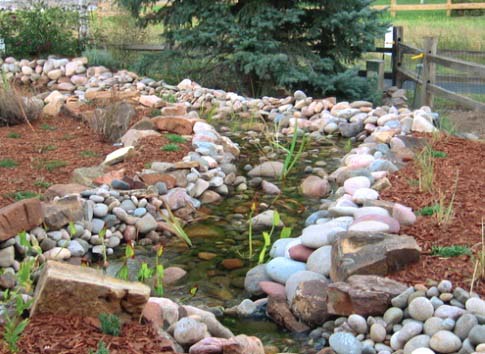
The stream will flow into a container (for example, an old bathroom), buried in the ground. From above it can be covered with a fine metal mesh, on which pebbles and stones are laid (masked). A pump is installed in the tank, which will supply water to the source through a hose. The hose is buried in the ground.
To create a dry stream you can use the technology discussed above, only without water. More details can be found here.
Decorating
An artificial spring is a miniature water device. Its landscape environment should, on close inspection, create the illusion of natural origin. For this, moisture-loving plants of small and medium forms are planted nearby:
- viburnum;
- astilba;
- fern.
If a regular design style of an artificial stream is chosen, then the source is made in the form of a mascaron (a decorative element depicting a human face or an animal's head in a grotesque or fantastic form) of a geometrically regular shape made of stones.
Decorating the stream flow consists in decorating the banks and the bottom of the channel. The banks are decorated with flat stones, large multi-colored pebbles, boulders from granite, slate. The stones are laid on tile glue, the space between them is filled with crushed stone or gravel.
Large stones are laid at the bottom of the channel in accordance with the project: to create mini-waterfalls, backwaters, dams. The rest of the bottom space is covered with coarse river sand, small multi-colored pebbles. The bridge / bridges across the stream (wooden or stone) will add completeness to the landscape. The variety of options gives you a choice for every taste.

How to properly arrange an artificial stream?
Depending on the type of material chosen for lining the channel, the construction technology will vary slightly. But the general rules remain unchanged. Carefully read the sequence of the course of work in order to complete the entire volume as correctly as possible.
What materials should be prepared for the construction of an artificial stream?
- rubble
- priming
- broken brick
- sand
- ropes, slats
- wooden or metal rods
- concrete mortar, film or fiberglass
- polyethylene pipes
- pumping system
- hoses
- decorative materials
- plants.
Artificial stream construction technology
When decorating an artificial stream, adhere to the following recommendations:
- Mark the stream bed.
- Use ropes, pegs and slats for this.
- Dig a trench, shaping the bed according to the design.
- Make steps for the flow of an artificial source every 0.5-1m.
- Remove roots and stones from the bottom.
- Tamp well.
- Run the hose along the entire length of the channel.
- Attach one end to the pump, fix the other in the reservoir at the place where the stream flows into the lake.
- Make a sand cushion all over the bottom with a 3 to 5 cm layer.
- Tamp thoroughly.
- Lay the film or concrete the bottom using plywood formwork.
- Flatten the blade carefully when using film.
- Cover the hose site with flat flagstone or other stones.
- Gently secure the edges under the sod turned up along the bank.
- Place the selected stones along the bottom of the stream.
- Turn on the water and check the stability of the pumping system.
- Decorate the stream with plants.
Plants
Plants are an important part of the decoration of the pond. All plantings that are used in landscape design can be classified into several categories.
The choice of suitable plants is made taking into account the given style, climatic conditions and personal preferences.

Shallow
In the shallow zone of an artificial reservoir, the most moisture-loving plants live. Shallow water plantations include perennials, which are valued for their scenic beauty, thickening and original appearance. Various plantations are suitable for decorating a shallow area - from large plants to textured miniature specimens.
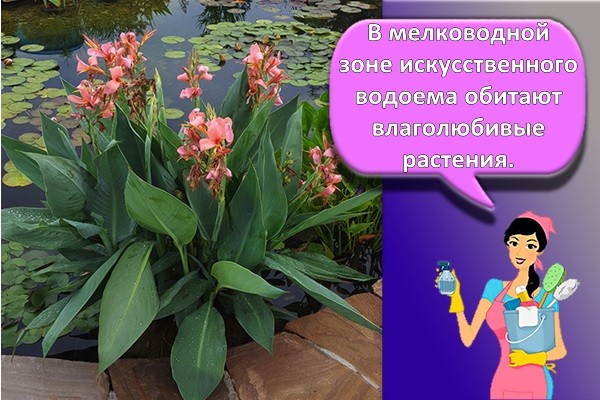
Deep sea
Deep-water plantings take root at the bottom of the pond, and their leaves reach the surface of the water surface. The advantage of underwater plants with floating leaves is their ability to absorb organic components dissolved in liquid and negatively affecting the ecosystem. Large leaves of deep-sea plantations create shade and prevent strong heating of the liquid, so that there is no active reproduction of algae. Most of the deep-water plantings are beautifully flowering.

Coastal
The role of coastal plantations is purely for decoration. Such plants give the reservoir a complete look and harmoniously fit it into a single style. It is recommended to plant coastal plantings in baskets and drip along the perimeter. Since plants grow quickly, you should not plant several specimens in one container so that they do not oppress each other.
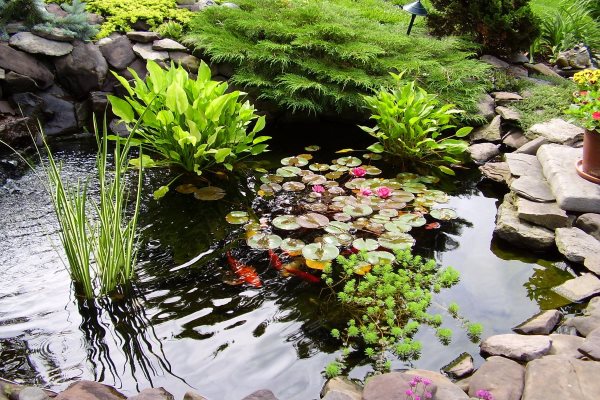
Wrong size
... A small puddle located somewhere near the fence or at the entrance to the garden and squeezed from all sides by lush and beautiful garden plants, no matter how hard you try, will always look wretched.
The size of the reservoir must be correlated with the surrounding space
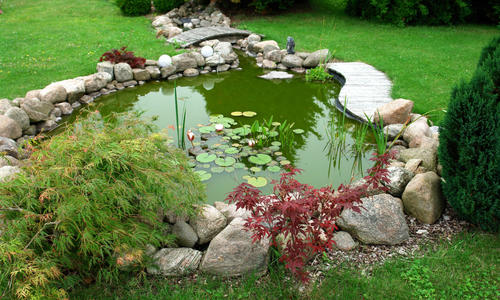
But this does not mean at all that a small reservoir (for example, in the form of a source) cannot decorate a garden at all. Simply by choosing this or that image, you need to correlate it with the surrounding space. If you don't have room for a large pond in your garden, perhaps a selection of Miniature Pond: A Dozen Simple Ideas can help you find a solution. A good example is also presented in the publication Saucer of Water as the completion of a dry stream.
Dry stream. Garden decoration in the spirit of the East
When arranging an artificial water flow, one principle is applied: to the highest point of the stream, a pump pumps water from a reservoir located at the lowest point on the site. After that, the water from the highest point flows down the natural slope.
If you have plans to make a stream that would resemble a natural spring, then use the existing terrain. The water stream can bend around garden sculptures and flower beds, flow near trees in the garden or resting places, creating now small waterfalls, now quiet backwaters, now islets, now shallows. Observing natural forms, you can achieve the naturalness of the stream.
The natural outlines of an artificial stream
Before making a stream, think over all the details. For example, does the terrain allow you to create a waterfall? Is there a need for a second pond? Will it be a small trickle or will it bend around a decent part of the site? The longer the stream, the more equipment you will need to set it up.
This is one of the original elements of the landscape. It's very easy to do
Time and money for the arrangement will be spent at a minimum, which is important. A dry trickle will decorate the garden area, hide the flaws in the relief and visually increase the area of the territory around the house
Mosquitoes like to swarm over real reservoirs, but these insects have nothing to do near a dry stream.
If you properly equip a dry stream, then the effect from it will be no worse than from a water source.It seems that just yesterday crystal water flowed in it. It feels like a light rain will fill the stream with life-giving moisture, restoring its life.
Dry streams are very popular in China. They are the centerpiece of rocky gardens, a symbol of water and continuous movement. In the East, the landscape is considered unfinished without water or its imitation. Dry Stream is a great alternative for gardens where it is impossible to build a real body of water.
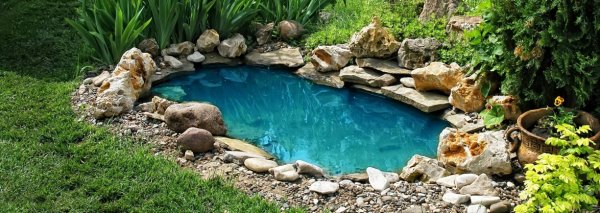
Japanese style stream
Some advantages:
- A dry stream is in harmony with any landscape design.
- Plays the role of a drainage ditch without the need to invest unnecessary time, labor and money.
- The possibility of settling on hills and hollows, in the sun or in the shade.
- An artificial dry stream can be made in just a few days.
- There is no need to level the landscape, lower the terrain or deepen the riverbed.
- There is no need to purchase a pump and accessories for pumping water.
- The ability to plant any, not just moisture-loving plants.
A dry body of water must have a mouth and a source. As for the mouth, it can be hidden behind large leaves of hosta, berry or other plants, while the source should be on a hill. Make a small indentation with fine gravel. In this simple way, you will create a semblance of a well, the illusion of a water source.
Decorative design of a dry stream

Arrangement of a stream with pebbles
Sand is perfect for marking the site. So, you can outline the contours of a dry reservoir. A man-made stream can consist of several channels or just one. If you want it to look natural, then change its width in different areas.
To prepare the surface, remove the sod layer and level the ground. You can use a regular garden rake for this. You should get a small depression (10-15 cm). Remember that an overly concave trickle looks unnatural.
Decorating a dry stream with boulders
The decorative elements will help you decorate the dry stream effectively. This can be, for example, a decorative bridge thrown over a stream, etc.
We equip a dry stream with our own hands: step-by-step instructions for creating
Before you form a dry stream in the country with your own hands, you need to think about what the shape of the future decorative fragment will be.
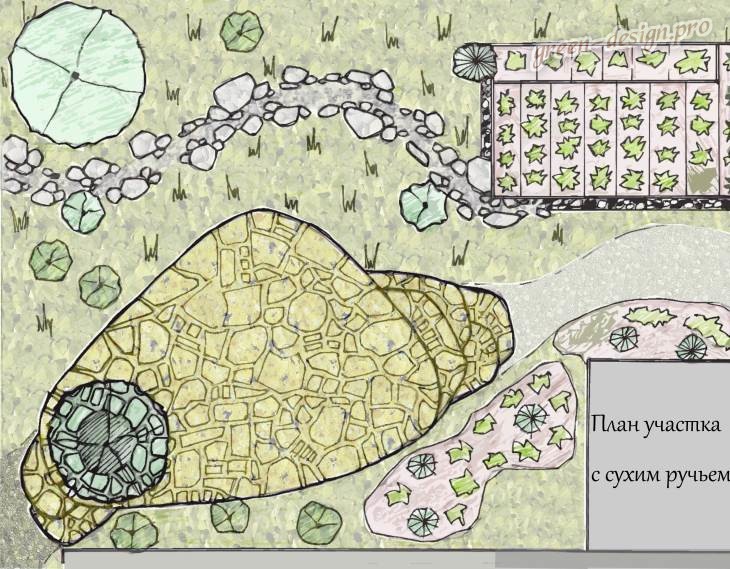
An example of a sketch of a site with a dry stream
You can draw up a standard drawing, look for interesting options on the Internet, or come up with your own, exclusive design. You can make a dry stream with or without a bridge, the main thing is to consider many options and choose the most appropriate one for the general style of the garden area.
Also consider how many streams there will be. After all, you can make a direct stream or divide it into several additional directions.
Choosing stones for the stream
When there is a visual idea of the future product, you can proceed to the selection of stones. To simulate water flow, it is better to use dark colored stones with a smooth structure. Light shades are used to form thresholds.
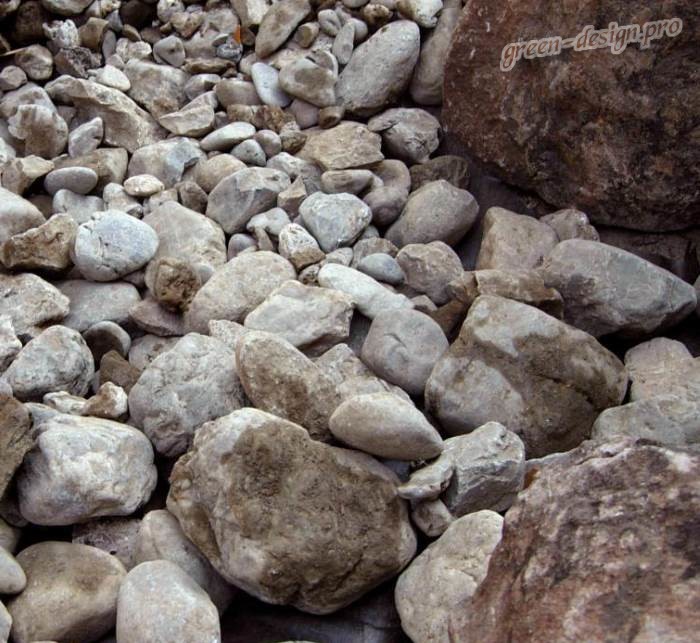
If you are planning a light blue composition, then give preference to gneiss, slate or basalt. Granite stones of the corresponding color will look appropriate in greenish, brownish or red shades.
Light shade accents are done with white marble or limestone. To form an original shimmering effect, glass balls are scattered between the stones. Such components will add lightness and mystery to the composition.
Choosing plants to decorate a dry stream
To make the trickle look natural and original, be sure to surround it with beautiful garden flowers. For growing in Japanese style, miscanthuses, Chinese reeds, and leaf-grating bamboos are perfect.Also organically, the compositions will be able to complement flowers in blue shades - lobelias, bells, forget-me-not flowers, irises, mosquito grains.
The original solution will be the planting of multi-tiered flower beds from different cultures, which will only complement the feeling of a living stream.
How to make a dry stream: stages of creation
Everyone can do a dry stream in the garden with their own hands, the main thing is to follow all the instructions for creating. Having decided on the main points, having formed a sketch, picking up stones, you can proceed to the formation of a decorative element. Now you have to lay the stones according to the prepared contours. Use sand, lace, hose, or something else to draw lines.
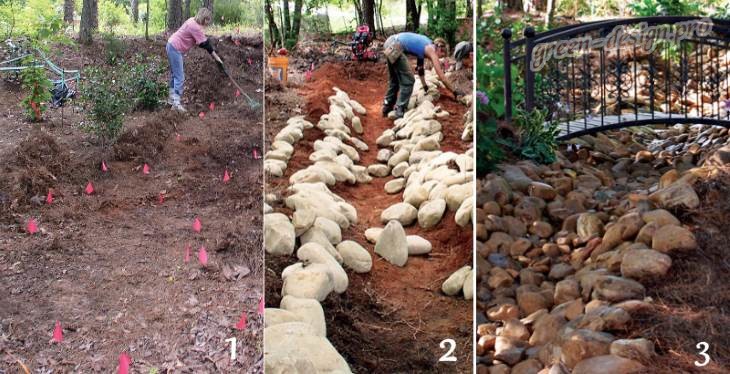
- Dig a depression in the ground along the outlined contour, removing a layer of soil 12-30 cm. Level the surface of the "pit" with a rake. Lay a non-woven material at the bottom that will allow air and moisture to pass through well and prevent weeds from appearing. Geotextiles or lutrasil are great. An alternative solution is a concrete layer, polymer film. From above, you can sprinkle the film with earth or sand.
- Place stones starting from the “banks”. Support the inner edges with cobblestones and rubble, lay the pebble to fix the crevices. Small pebbles are laid by the bed of stone reservoirs.
- Having formed the "banks" of a dry stream, you can proceed to the designation of the "channel". Now you can lay out miniature pebbles - pebbles or rubble. The final stage is planting and arrangement of plants.
As you can see, a dry stream in do-it-yourself landscape design is simple to create, requires a minimum of financial and power costs.

Making a dry stream with your own hands
When there is no doubt and the decision is made in favor of a dry reservoir, you can start implementing it. To do this, you need to choose a place and decide on the necessary materials.
First of all, it is necessary to outline the contour of the future stream and dig a hole around its perimeter, equal to 15-25 cm. To prevent the growth of weeds, it is better to cover the bottom of the future reservoir with any covering material. For this, dark colors of geotextiles or non-woven fabrics that transmit moisture well are suitable. This simple measure will save you from annoying weeds that can spoil the look of your masterpiece.
Then you can fill the reservoir with the necessary materials: sand and various types of stones. For laying, several types of stone are taken at once, as a rule, these are pebbles, pebbles and quarries. The booth is used to strengthen the edges of the stream, pebbles mixed with sand fill the stream bed, and the cracks are laid naked.

The main thing to remember is that a dry stream came to us from Japan. And this is a country where brevity and moderation are valued. After the construction of the stream, it needs to be decorated. Correct decoration by plants will help in this. Here it is better to take those species that are associative to water, but can grow on ordinary soil. When decorating, as when organizing the stream itself, you need to know when to stop: do not allow your reservoir to turn into an ordinary flower garden. Plants should only emphasize beauty, but not become its main element.

Avoid using tall plants, but bluish-gray or blue colors will do just fine (bells, blue fescue, creeping tenacious, mosquito cereal, and others).



